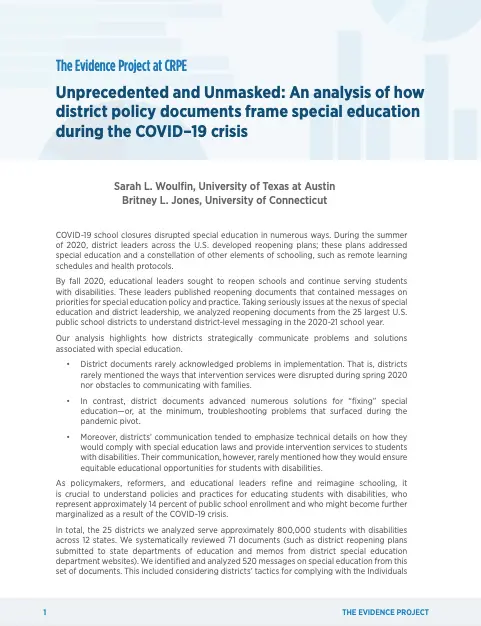During the summer of 2020, district leaders across the U.S. developed reopening plans; these plans addressed special education and a constellation of other elements of schooling, such as remote learning schedules and health protocols.
Taking seriously issues at the nexus of special education and district leadership, we analyzed reopening documents from the 25 largest U.S. public school districts to understand district-level messaging in the 2020-21 school year.
Our analysis highlights how districts strategically communicate problems and solutions associated with special education.
- District documents rarely acknowledged problems in implementation. That is, districts rarely mentioned the ways that intervention services were disrupted during spring 2020 nor obstacles to communicating with families.
- In contrast, district documents advanced numerous solutions for “fixing” special education—or, at the minimum, troubleshooting problems that surfaced during the pandemic pivot.
- Moreover, districts’ communication tended to emphasize technical details on how they would comply with special education laws and provide intervention services to students with disabilities. Their communication, however, rarely mentioned how they would ensure equitable educational opportunities for students with disabilities.
We share recommendations for research and practice on special education implementation throughout phases of the pandemic.
- State-level administrators should offer clear guidance and ongoing support to district leaders as they create—and implement—plans addressing multiple components of special education and aiming to foster healthy learning and working conditions for all children and educators.
- To address stark inequalities, district administrators should shift resources, planning, and framing to increase attention toward the equity model.
- Structural changes are needed to move beyond complying with regulations and delivering interventions to equitably serve SWDs.





